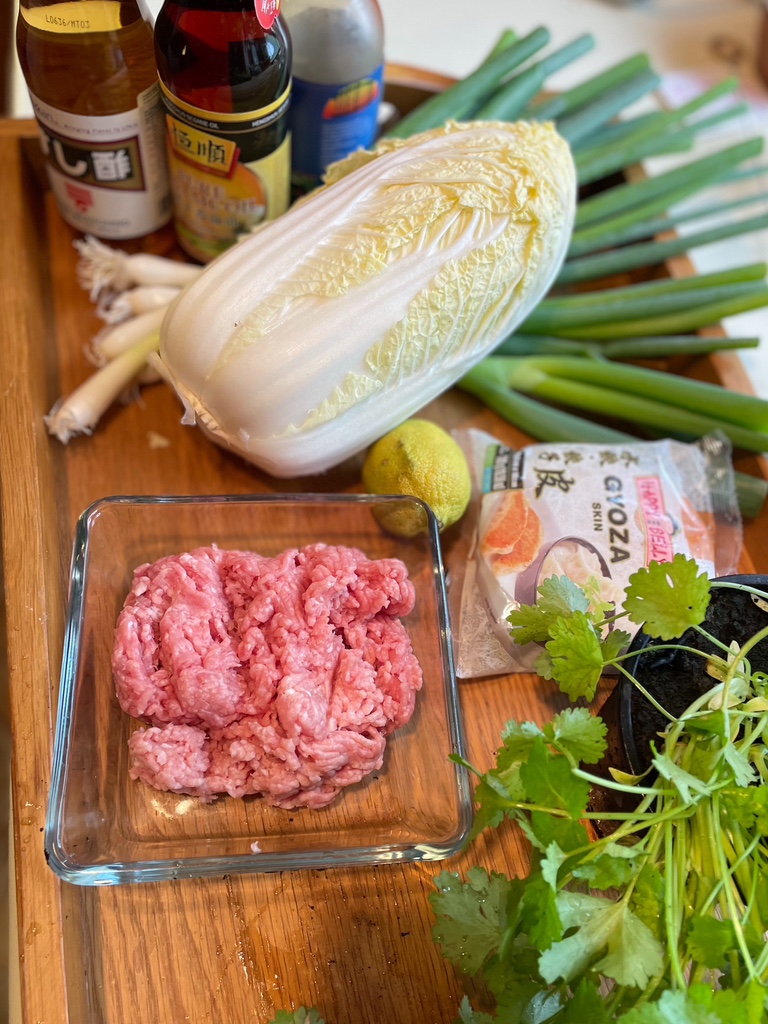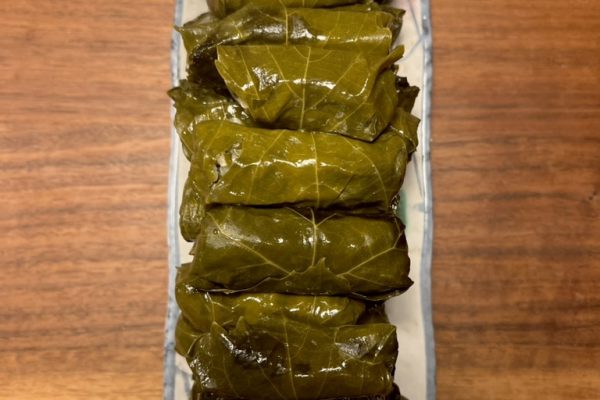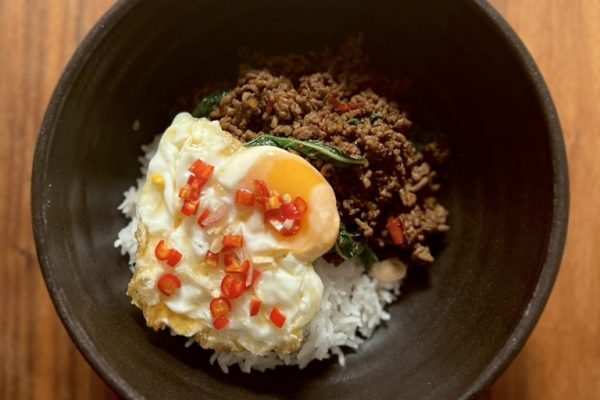Japanese gyoza are small dumplings that are traditionally filled with a delicious mixture of minced pork, Chinese cabbage and scallions. Not only are these tasty treats incredibly delicious, but they are also surprisingly easy to prepare.
Gyoza are also a good start if you want to learn about Japanese cuisine. These dumplings, crispy on the outside and juicy on the inside, have had a remarkable journey going back to China. There, stuffed dumplings have long existed in every conceivable shape and flavor. We will present interesting variants from time to time, because we are big fans of dumplings, whether fried or steamed.
It is not known exactly, but it can be assumed that gyoza arrived in Japan in the 17th century through Chinese immigrants. In Japan, the dish evolved and adapted to local taste preferences. Nowadays, gyoza are popular in Japan and around the world as a delicious appetizer or snack.
Thanks to ready-made dough sheets preparation is relatively quick and easy. Why we for once suggest here to work with a ready-made product? There are several reasons. Gyoza dough consists only of flour and water, but it still takes a lot of effort and experience to get the dough to the right consistency. We’ve tried a few times – with rather varying success – and find that the effort doesn’t stand for it. There’s nothing different in the frozen ready-made products available in almost every Asian supermarket, either, so it’s not like we have to make any major health or taste sacrifices here. We always have a packet or two in the freezer. It’s brilliant to be able to quickly make a few friends happy with dumplings. By the way, you can also freeze the finished or semi-finished gyoza and defrost them without loss, a great alternative to conventional convenience food (which we do NOT serve).
Let’s go!
First, about shopping. It’s worth asking your trusted butcher to mince you some fattier pork, it improves the flavor by leaps and bounds. Overall, you eat relatively little meat with this dish, so even we, who use pork rather rarely, make an exception here.

Let the pastry sheets defrost slowly at room temperature and use them only when they are no longer frozen even in the middle.
We cut the Chinese cabbage as small as possible – first into strips…

… and then into smaller pieces.

Mixed with a little salt, we leave it in a sieve so that it loses liquid.

We cut the scallions into small pieces. We like them to be very finely chopped as well, but that’s a matter of taste. We add some fresh cilantro, which is optional.

Garlic and ginger are finely grated. Now we squeeze remaining liquid from the Chinese cabbage by hand. Then we mix these ingredients in a large bowl with the minced pork and season with soy sauce, rice vinegar (or lemon juice), sesame oil, white pepper and a pinch of sugar. Optionally, you may add a small amount of sake or Chinese cooking wine (Shaoxing) at this point.

The special trick for good gyoza is to stir the filling until the mixture is perfectly combined. You can tell by the visible white threads that form in the meat. You can use a large wooden spoon to stir – in Japan, large chopsticks are typically used. Decide on a direction and stick with it, always stirring in circles. Be patient with this process, and don’t stop until you’re really sure you’ve reached the perfect consistency. This is so important because it avoids the typical crumbly consistency of cooked or fried ground meat – you know what I mean – and gives the filling a creamy and juicy consistency. In some recipes, a little broth is added to the filling and the amazing thing is that the stirred mixture can still absorb this liquid as well.

Now we form the gyoza. Put a generous teaspoon of the filling in the middle of the dough and take it on the palm of your hand.

Dip a finger in water and moisten the edge.
Then fold the circle into a half-moon shape and press the edge in the middle once firmly. Now it’s time to fold. In the end, the exact shape is not important, but the classic folding technique ensures that the gyoza stand well in the pan and fry perfectly. Just give it a try, with a little practice it’s not as difficult as it looks. Here is a short video about it.

First fold one half of the edge, then the other half in small folds towards the center. There is no right or wrong here, as you would expect with a traditional recipe, very many variations lead to the result.

Repeat this step with the remaining sheets of dough until the filling is used up. Store the folded gyoza best on a baking sheet that you have dusted lightly with a little starch.
Now it’s time to fry. You will need a frying pan with a lid. It won’t work without one. If necessary, you can use a large plate.
Heat some vegetable oil, maybe a few extra drops of sesame oil, in a non-stick pan over medium heat. Once the oil is hot, carefully place the gyoza in the pan, making sure they are not too close together.

Now fry them for about 3 minutes until they are golden brown on the bottom. Do not try to move the gyoza until they come off the bottom on their own. They are called “potstickers” in some parts of the world for a reason, it’s just normal and part of the process.
Now it gets exciting: Pour some water on top, about enough so that the fried gyoza are a good third of the way in the water.

It sizzles and steams and it is exactly this steam that we need so that the gyoza cook perfectly on the top. Therefore, the lid is now immediately put on the pan. It takes about 5 minutes, maybe a little longer, until the water has completely evaporated.

The dumplings are done when there is no water left and we are back from steaming to frying. You get the gyoza master title when a kind of crust from the cooking water has formed at the bottom of the pan. This crust is considered a special delicacy and is of course served with it.
Now the gyoza are arranged on a plate and served with a simple sauce of soy and rice vinegar, maybe also some lemon juice.

You may also use toasted sesame seeds and chopped scallions as garnish.
If you want to freeze some of the gyoza, either wrap the finished fried ones or steam the formed raw ones briefly in a bamboo steamer or in a colander, as we described here. We do not recommend freezing completely raw pieces for hygienic reasons and also because the gyoza stick together very easily in this state.
Enjoy.
And may the taste be with you.
Ingredients (for about 4 people or 30 pieces):
300 g frozen gyoza dough (approx. 30 dough sheets)
200 g minced pork
About 150 g finely chopped Chinese cabbage
1 bunch of scallions, finely chopped
Optional: fresh coriander
2 cloves garlic, grated
2 tsp fresh ginger, grated
4 tbsp soy sauce
2 tsp rice vinegar
1 tsp sesame oil
Optional: some Japanese sake or Chinese cooking wine (Shaoxing)
A pinch of sugar
2 teaspoons salt (for the Chinese cabbage)
White pepper to taste
Some starch for the tray
Vegetable oil for frying




